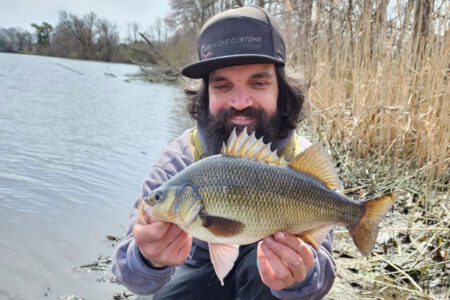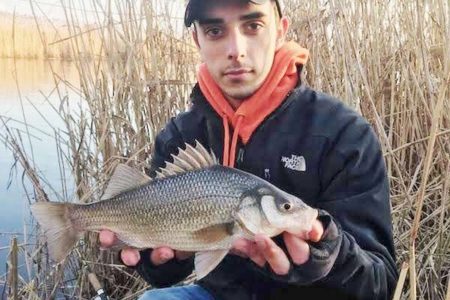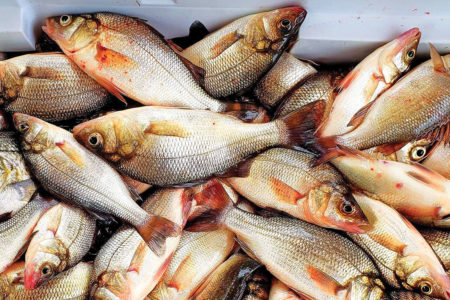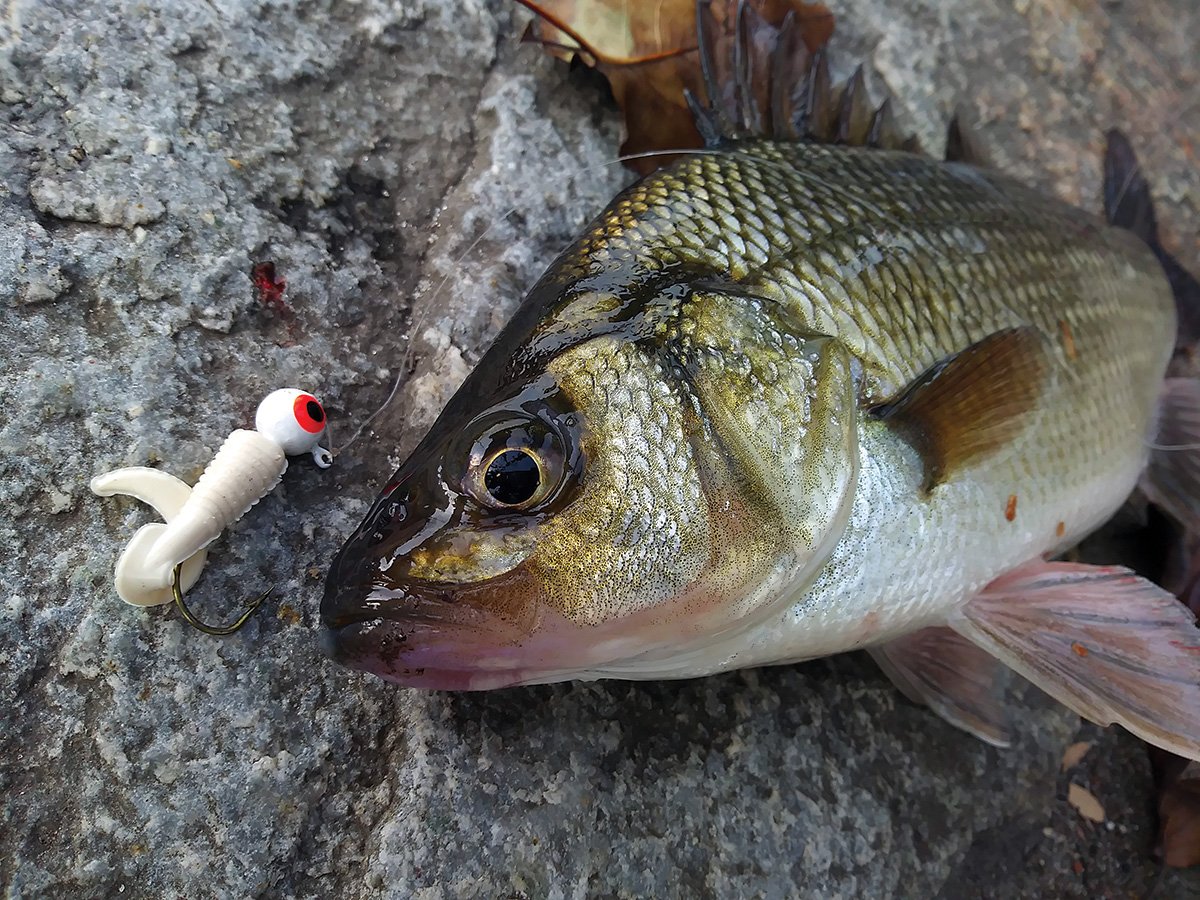
Years ago I discovered something very valuable while fishing for holdover stripers in early spring. In many places, mostly rivers, where I was fishing white perch were almost as plentiful as the holdover bass. They seemed to hang with the schools of stripers, and they hit just about the same lures as the stripers. In many cases they were the same sizes as the stripers. That led me to target both stripers and white perch in my preseason saltwater game.
White perch are a unique species here in southern New England. These aggressive feeders can live in saltwater, brackish water and even freshwater. They tend to spend the winter in deeper parts of bays and rivers, but in the spring they roam freely to search for food in shallow water rivers and creeks that lead into estuaries. There they feed on the same stuff that stripers eat, namely small fish, shrimp, small squid, worms and even small crabs.
Your best bet to finding both white perch and holdover stripers is to find rivers and freshwater ponds that enter coastal ponds, bays or estuaries. In my home waters of Rhode Island, I have found many places that fit that bill, and these places have good populations of both perch and holdover stripers. Such places as the Providence River, the Seekonk River and the Narrow River are three such areas in Rhody where I have caught both perch and holdover stripers in the springtime. Look at a map and I’ll bet you could find a half dozen more places with similar characteristics and that hold perch and holdover stripers near you.
Many books and articles will point out that striped bass and white perch are related. There are a couple of major differences, though, physically between white perch and stripers, and that will come into play when choosing lures to use to catch them. Overall, white perch tend to be smaller with the average fish less than a pound and less than a foot in length. However, I have landed some perch of two-plus pounds (about 14-plus inches), and one time I am sure I released a state record fish in the Providence River. So they can be large, as large as schoolies. Another major difference is the size of the mouth. White perch have a small mouth while stripers have a much bigger mouth. That will be an important factor when choosing lures that will catch both. White perch also have a wider profile and lack the stripes we find on striped bass.
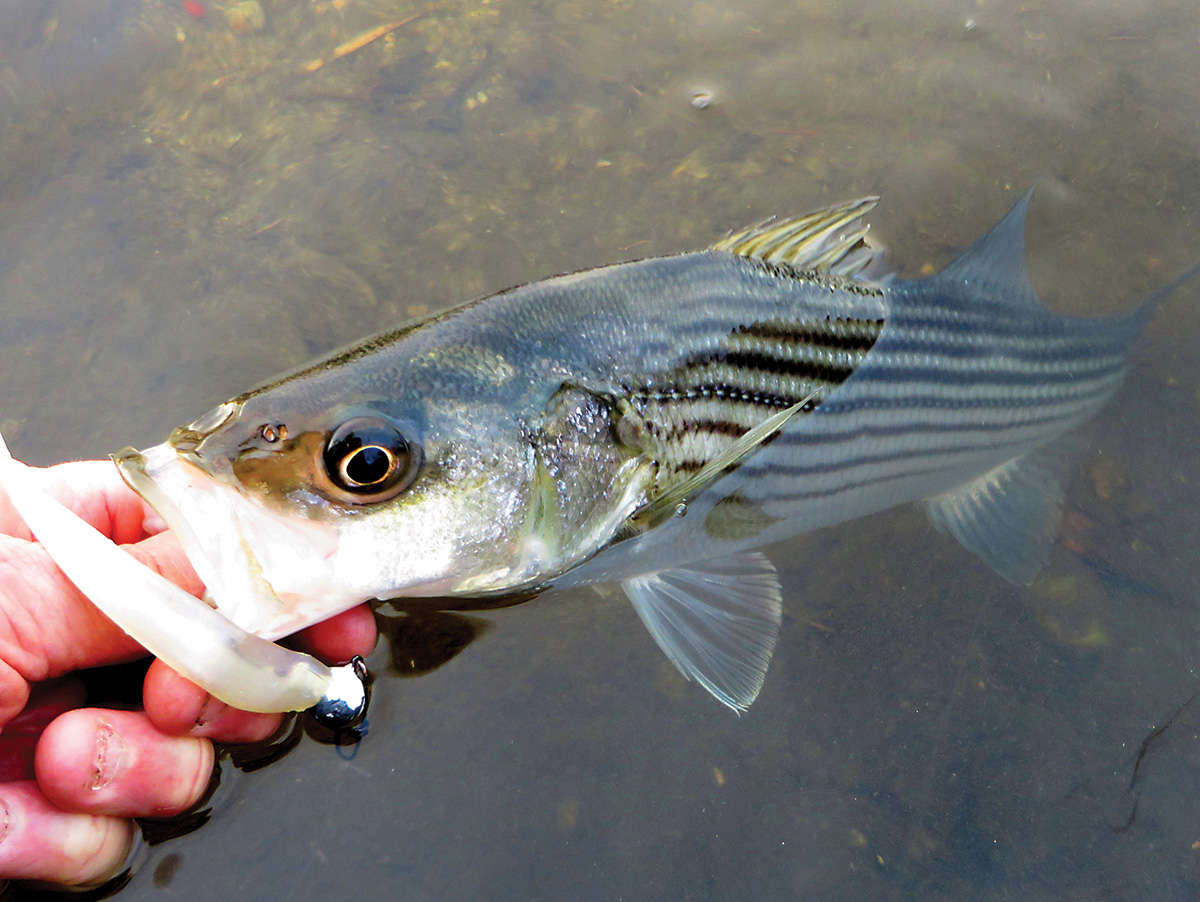
When choosing tackle to catch both these species think light. That same outfit that you would use for freshwater trout is well-suited to target these fish. Light spinning rods under 6 feet with a light reel and monofilament line testing out at 8 pounds or less would be ideal tackle choices.
Lures can vary. Both white perch and holdover schoolies can be aggressive feeders and sometimes they go after large lures, but if you want to consistently catch both schoolies and perch, my suggestion is to go small. I like to use a variety of jigs to catch these fish because I like the ease of unhooking as I am catching and releasing my fish. These fish will also hit small swimming plugs, but I don’t use them because of the treble hooks.
I tend to use two types of jigs when fishing for both these species. Bucktail jigs work great. Jigheads threaded with various plastics are also effective as well as very convenient.
The bucktail jigs I use are small and are most effective on white perch since the perch has a small mouth. Generally, I use bucktail jigs of either 1/8 or 1/4 ounce. I make these myself. They are all made with a white head and white bucktail. I tie some with red thread and some with white thread. I usually make them with a round head or a flat head. I will also add a 1-inch plastic curly tail (for 1/8-ounce jig) or a 2-inch plastic curly tail (for 1/4-ounce jigs.)
Plastics with jigheads are also very effective for these fish and easy to use if you are not into making your own bucktails. One effective way to do it is to get a jighead (weights of 1/8, 1/4 or 3/8 ounce) with a barb and just thread on a white curly tail. Another way to do it is to thread a fluke body such as a Zoom fluke onto the jighead. I like those fluke bodies in an albino or white color. Small plastic Cocahoe minnows can also be used.
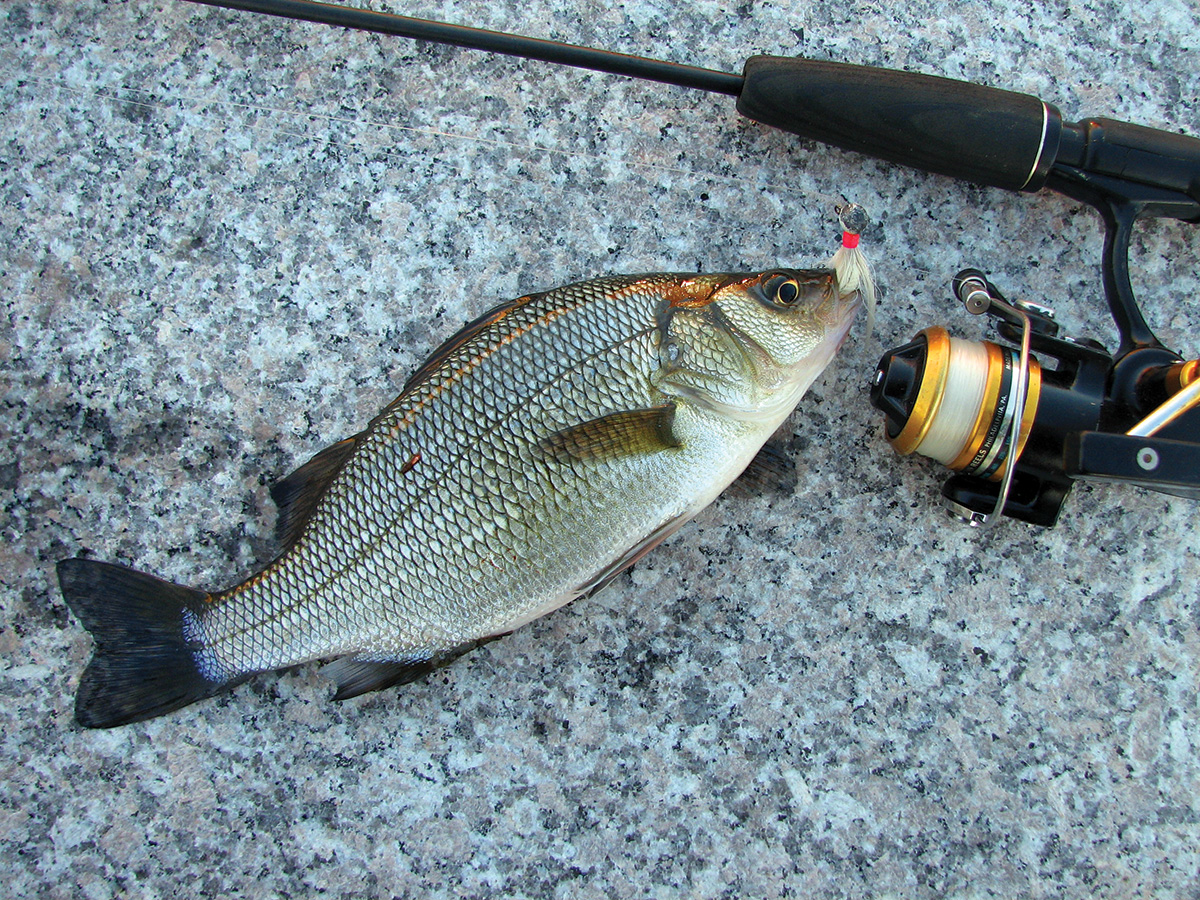
Most of the time I work these jigs in some sort of river current. When fishing current, you want to cast across the current and let the jig sink to the bottom. Work the jig back to shore with pulls of the rod tip while reeling slowly. You want to get that jig bouncing along at or near the bottom. Many times the fish will hit when the jig is moving back down after a bounce. Jigs with just a plastic curly tail can be simply reeled-in slowly since it is the wiggling tail that gets the attention of the perch and bass.
I call the time period from mid-March until mid-April the preseason here in Rhode Island for saltwater fishing. The migrating stripers have not arrived yet, but there is still fishing available for those who want to venture out on a nice day. In many of the rivers that empty out into Narragansett Bay or the coastal ponds of the south shore oceanfront, white perch as well as holdover stripers come alive after ice-out. This is an opportune time to catch both species and get a jump on the upcoming fishing season.
| WHITE PERCH REGULATIONS |
|---|
| While regulations for striped bass remain consistent across the states of New England (28-inch minimum length and 1-fish bag limit), regulations vary slightly from state to state when it comes to white perch.
NEW HAMPSHIRE: MASSACHUSETTS: RHODE ISLAND: CONNECTICUT: |
